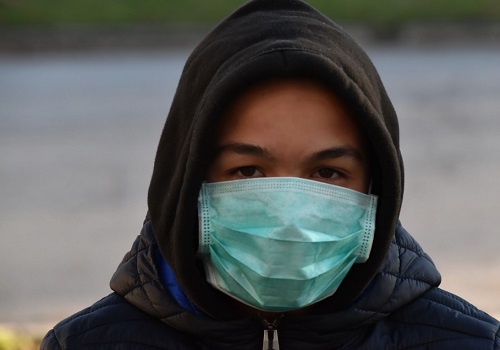We’ve seen this narrative repeated so often lately: COVID-19 is the ultimate equalizer. At the heart of the statement is the fact that no one is immune to the virus, regardless of socioeconomic status, geographical location, or color of their skin. But the assertion belies some harsh truths that point to a much starker reality, especially in the U.S. Rather than a sign of equality, the pandemic is exposing serious inequities that are putting certain groups in greater danger than others.
That imbalance rears its ugly head through the sheer number of COVID-19 cases and deaths. In Louisiana, where African Americans account for approximately 33% of the population, they represent more than 70% of the state’s COVID-19 fatalities. In Chicago, African Americans account for 67% of the recorded deaths, but make up 29 per cent of the city’s population. As of the second week of April, black people accounted for around 40 percent of Michigan’s 1076 coronavirus deaths, despite only making up around 14 percent of the population in the state, with hard-hit Detroit accounting for nearly 85% of the state’s COVID-19 deaths. And in Washington, D.C., where black people represent 46% of the population, they make up 62.5% of fatalities, according to the Brookings Institution.
As Dr. Suzet McKinney, CEO of the Illinois Medical District explains, the black population in the U.S. suffer disproportionately from chronic illnesses such as diabetes, high blood pressure/hypertension, heart disease and asthma. The challenge with COVID is that when you overlay it on top of these chronic health conditions, it makes for more severe illness and even death.
To be sure, black communities are getting hit hard by the pandemic. But health challenges are not standalone issues. This disparity is bigger than COVID. Even in Canada, which lacks data on Canadian COVID-19 patients’ race and other identifiers, it would be remiss to assume it’s not facing similar challenges, offers Roberta Timothy, assistant professor at the University of Toronto’s Dalla Lana School of Public Health.
The more we look, the more we learn that current disparities are rooted in systemic issues that have existed for years. COVID has laid bare the inequalities in ways we can no longer ignore. The question is: what can be done?
Health challenges go deeper
“In order to fix the issue once and for all, we have to address some of the more systemic issues that have contributed to a situation in which the black community suffers disproportionately from these healthcare disparities, says McKinney, who is also adjunct instructor at Harvard University’s T.H. Chan School of Public Health and coauthor of Public Health Emergency Preparedness: Practical Solutions for the Real World.
Inequities in housing, income generation, healthcare, education, to name just a few, can be found equally in Chicago, Detroit and other large urban centers which share longstanding systemic issues and policies that have contributed to the inequalities. A pandemic like COVID only serves to amplify them.
“During COVID these health disparities or what I call health violence has exasperated as income and jobs are lost, stress is increased, communities already dealing with this on a “normal day” have increased disparities,” adds Timothy. She cites Canada’s prison system as an example, one over-represented by black and indigenous people, which is facing greater risks for COVID. Black and Indigenous workers who do not have power or decision-making in their jobs are further impacted now, she adds, due to lower pay and limited access to safety equipment and other supports.
What’s important today is to get the right resources into the hands of the more disparately affected communities, asserts Timothy emphatically. Among other things that can be done, a rent freeze is a must, she adds. And collecting race-based data in Canada is important so that community health scholars and practitioners can analyze it and create appropriate programs.
Mistrust must be addressed
Of course, we cannot ignore the general mistrust by African Americans and other extremely vulnerable communities of government and its entities. Without delving into the historical context that created the mistrust, what public health agencies must do, McKinney says, is engage community organizations, faith-based organizations, and even cultural groups that have more trusting relationships with the people living in those communities.
But don’t forget that the black community is not homogeneous, cautions Timothy. “We are elders, women, queer, living with chronic health disabilities, migrant workers, undocumented, mental health challenged, etc. There’s no one fit for all people.” Still, she says, getting to the heart of the mistrust that influences many not to seek healthcare is essential for the disparity to be addressed now and into the future.
And be careful how you approach each community. Dr. McKinney credits her background in public health emergency preparedness and response for teaching her an important tenet that guides her work: “nothing for us without us”. You must engage the people living in those communities, she explains. “It’s not about going into the community and telling them what they need. It is about getting their input about what they think is needed.”
A systems approach is imperative
With the right approach in place, once you start to tackle the larger issues can you address the conditions that breed them. One of the basic principles of public health practice, shares McKinney, is that solving overly complex problems require a systems approach. With input from multiple sectors and entities – the health system, educational system, law enforcement, community, government, policy makers – you can focus on improving the socioeconomic status of more vulnerable communities.
Keep in mind that each issue has a domino, often spiraling, effect on other issues. By addressing educational inequities, people will have more opportunities to complete schooling, go to college, get better jobs and generate income that helps them care for their families (it’s not lost on any expert that a greater percentage of African Americans lack job security, sick leave, and health insurance and that many are riding public transportation to get to their jobs during COVID).
Likewise, if families are not worried about where their next meal is coming from, they can pay greater attention to their health. They may even have greater access to transportation that enables them to get to their healthcare provider more regularly, demonstrating behavior that is needed to reduce those levels of disparity. The same holds true for tackling the issue of housing.
Going a step further, McKinney shares an example of how a financial firm can partner with a school, providing mentorship and other opportunities including a pathway to college. The student eventually gets hired by the firm and then mentors future students. And around and around it goes. “The culmination of that educational pathway is the direct entry point into an employment scenario that will literally break that cycle of poverty that the child grew up in,” says McKinney. “Those are the type of intentional activities that I believe will break the cycle of disparities in many of these communities.”
Elisa Birnbaum is the publisher & editor of SEE Change Magazine and the host of its podcast. She’s also the author of In the Business of Change: How social entrepreneurs are disrupting business as usual.



Excellent article about how we ignore the social determinants of health that impact racialized communities and until we address the root causes of poor health, we cannot really effectively deal with various illnesses.